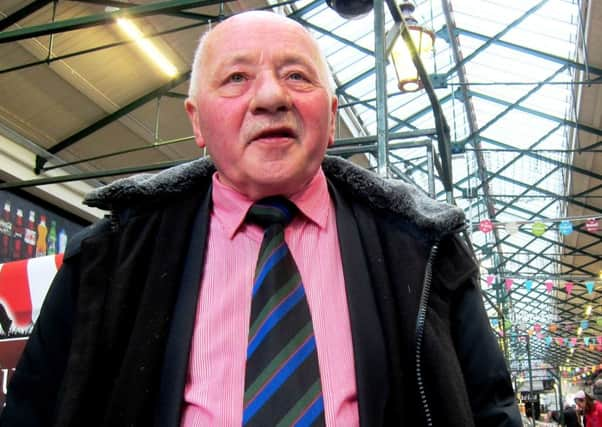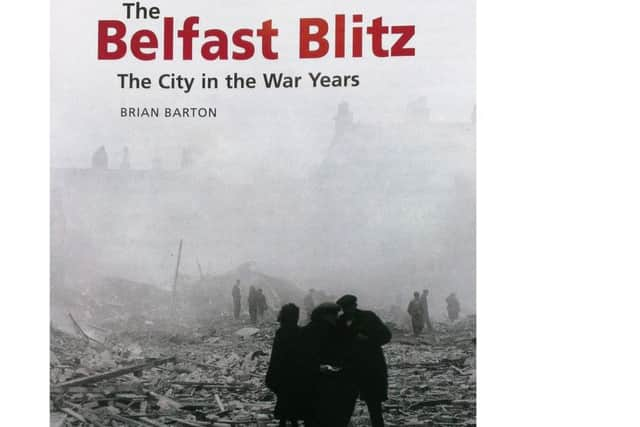Belfast City Hall was damaged in blitz, so put memorial there


I am firmly of the opinion that a permanent war memorial to commemorate the casualties of the Belfast blitz should be erected in the city.
This should be done by the council and, if possible, it should be located in the grounds of the City Hall which itself sustained bomb damage.
Advertisement
Hide AdAdvertisement
Hide AdThe Belfast blitz was the greatest disaster in the history of the city or, indeed, in any town or city in Ireland. With the seventy-fifth anniversary of the blitz still fresh in our minds, this is the ideal time to erect a memorial – when there are still many people who can clearly remember the air raids, or who were directly affected by them, or whose families lived through them. In the course of four Luftwaffe assaults on Belfast during April-May 1941 (two of them officially classified as ‘major’ attacks), some 970 citizens lost their lives.


The resulting deaths impacted on both communities, Catholic and Protestant – the bombers did not discriminate – so the erection of a memorial ought not be a ‘party’ political issue. Also, unlike the deaths resulting from the Titanic disaster, virtually all of those who died were local people; they were killed in their own homes, or in neighbourhood shelters or streets.
I am personally aware of the fact that a grant towards the cost of the erection of a blitz memorial is available to the Council; it is to the value of £100,000. Memorials to civilian war dead have been erected in a number of British cities and towns – for example, in Plymouth and Portsmouth; in both these bear the names of all local citizens who lost their lives.
Manchester has a ‘memorial tree’, which also lists the names of the city’s civilian fatalities, and Hull is currently planning to erect one. There are also comparable memorials in Eire – for example, in Dublin and in Campile, County Wexford.
Advertisement
Hide AdAdvertisement
Hide AdIf it is at all feasible, the memorial should be inscribed with the names of each of the roughly nine hundred civilian victims who are known. This would help to bring home to those who look at it the immense loss of life which the blitz caused; it would do this to a degree that the mere citing of statistics could never do. It would also highlight in dramatic form the fact that in some instances entire families, and even streets, were wiped out.


It would be therefore not just a civic memorial, but an invaluable public record of what the city experienced during the blitz. In addition, the inclusion of names would personalize the memorial. It would make future ceremonies held there (presumably on a yearly basis at Easter) infinitely more meaningful, poignant and significant, especially for the surviving families of blitz victims.
It should be borne in mind that some of those whose names would be listed on the plinth of the proposed memorial do not have any marked grave at present.
Specifically, this would include those victims who were declared to be ‘missing, presumed dead’ by the City Coroner’s court in May/June 1941. In such instances, the memorial with the names inscribed would fulfill a real need. Moreover, the inclusion of victims’ names would increase public interest in the memorial.
Advertisement
Hide AdAdvertisement
Hide AdPeople would come to look at it to see if their own family’s name appeared on it, or the names of other families they know.
A possible ground for concern about including the names of individuals on a blitz memorial plinth is that there is no definitive list of civilian dead. Inevitably this is the case.
A significant number of those who died were unidentified and unclaimed because their bodies had been so badly mutilated, or there was no one left who could identify them, or there was such administrative chaos in Belfast in the aftermath of the city’s two major raids, etc.
However, the Commonwealth War Graves Commission’s list of civilian dead is not far from being definitive (this list is included in my book The Belfast Blitz; the City in the War Years). It contains roughly nine hundred names (i.e. about ninety-five percent of those who are known to have died).
Advertisement
Hide AdAdvertisement
Hide AdIt is true that it contains some inaccuracies. The names of about a dozen people are included in it who did not die as a result of the air raids. But these are quite easily identified and can be removed.
Also, it might well be feasible to leave on the plinth of the proposed blitz memorial, room for the later addition of any names of persons that had initially been omitted, and which it can be proven did die in the blitz.
Moreover, it could be clearly stated on the inscription that the memorial is dedicated to all civilians who lost their lives in the Belfast blitz, whether their names are known and inscribed on the plinth or not (it might be borne in mind that there already are two memorials dedicated to the unidentified and unclaimed civilian blitz dead in Belfast – one at the City Cemetery, and the other at Milltown).
• Brian Barton is author of ‘The Belfast Blitz – the city in the war years’